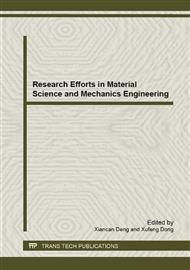p.169
p.175
p.181
p.186
p.191
p.195
p.200
p.204
p.209
Numerical Simulation and Analysis of Ironing Process for Deep Cup Shaped Workpiece
Abstract:
The numerical simulation of the ironing process of deep cup shaped part was conducted by finite element software Deform 3D. The influences of interface friction and deformation velocity on the forming load and blank damage were studied in this paper. The simulation results showed that the forming load and damage increased obviously with the increase of the friction between the blank and cavity die. The blank damage increased and the forming load decreased with the increase of deformation velocity. These conclusions provide a reliable theoretical basis for the optimization of the ironing process of deep cup shaped part.
Info:
Periodical:
Pages:
191-194
Citation:
Online since:
April 2013
Authors:
Keywords:
Price:
Сopyright:
© 2013 Trans Tech Publications Ltd. All Rights Reserved
Share:
Citation:


